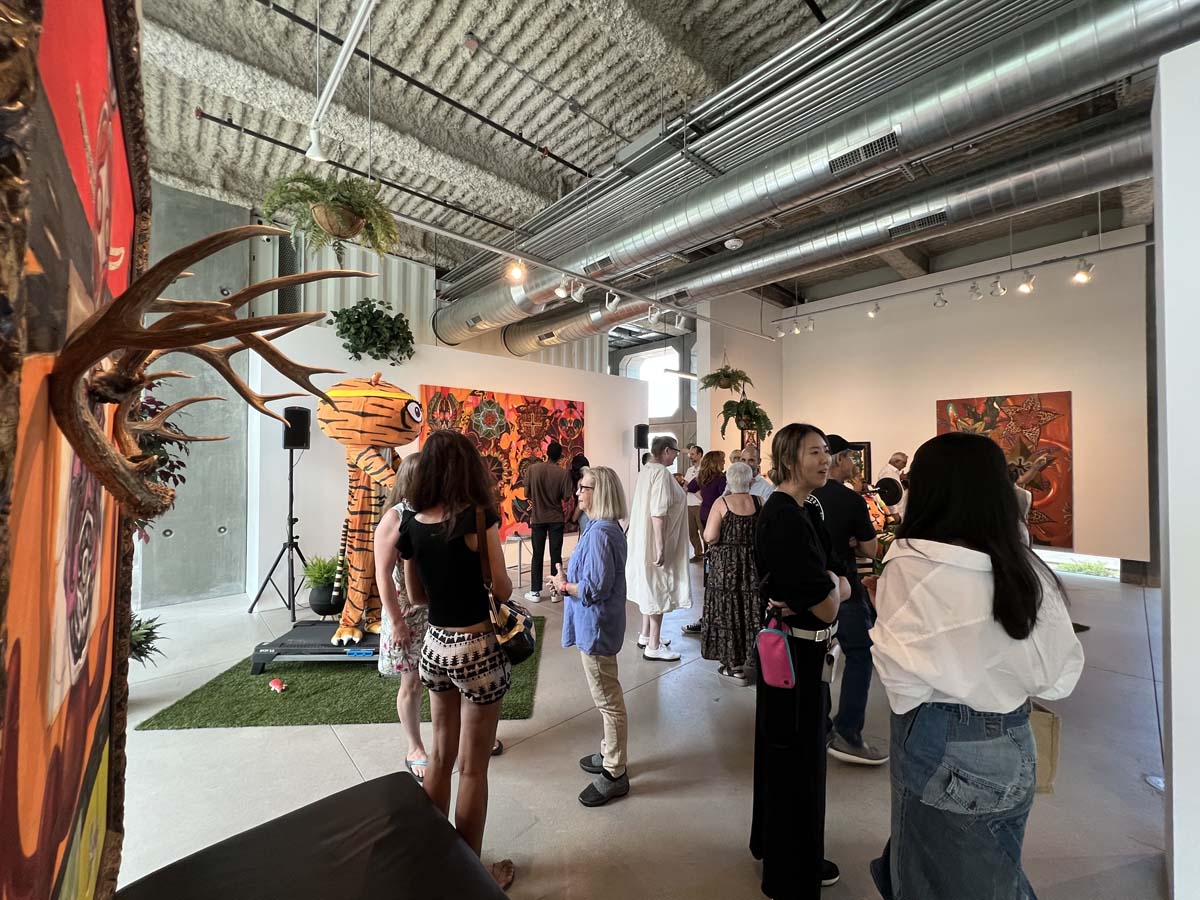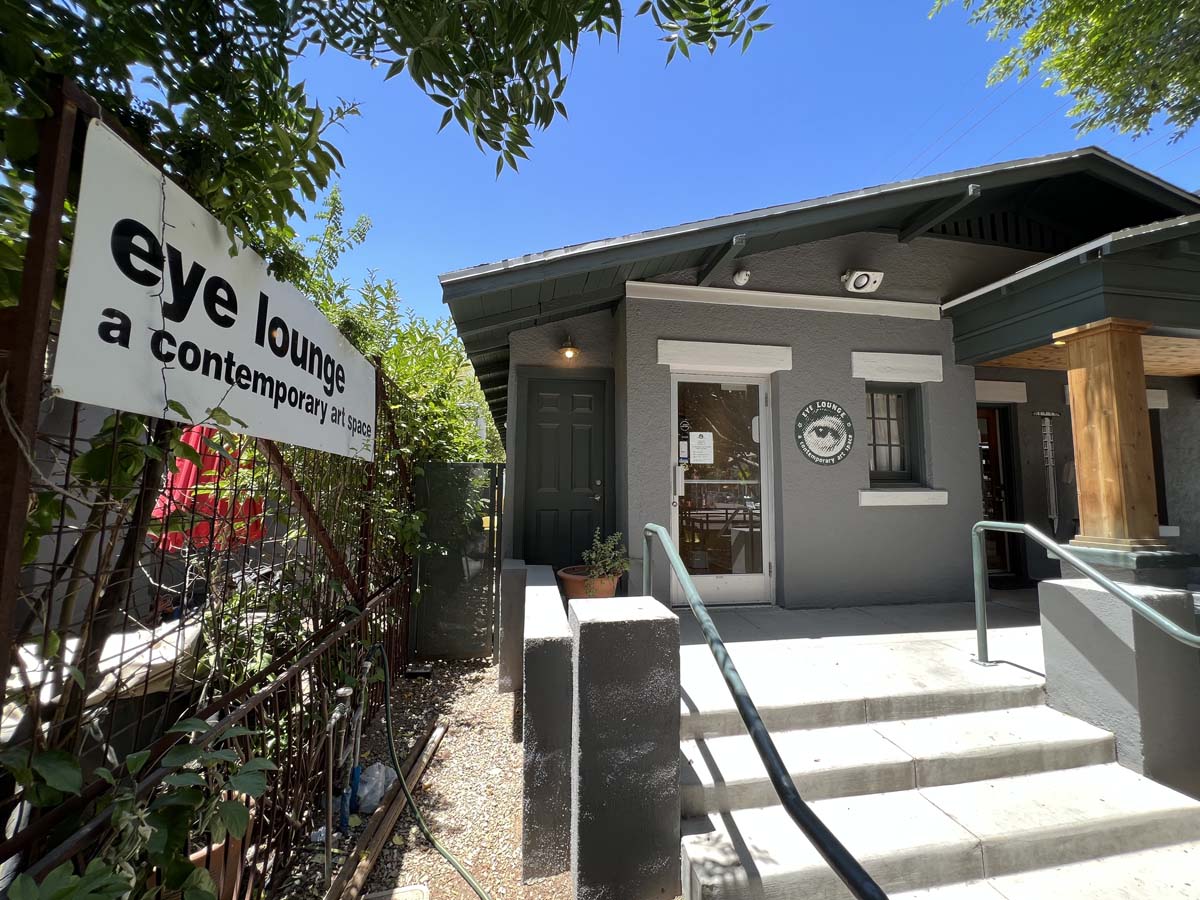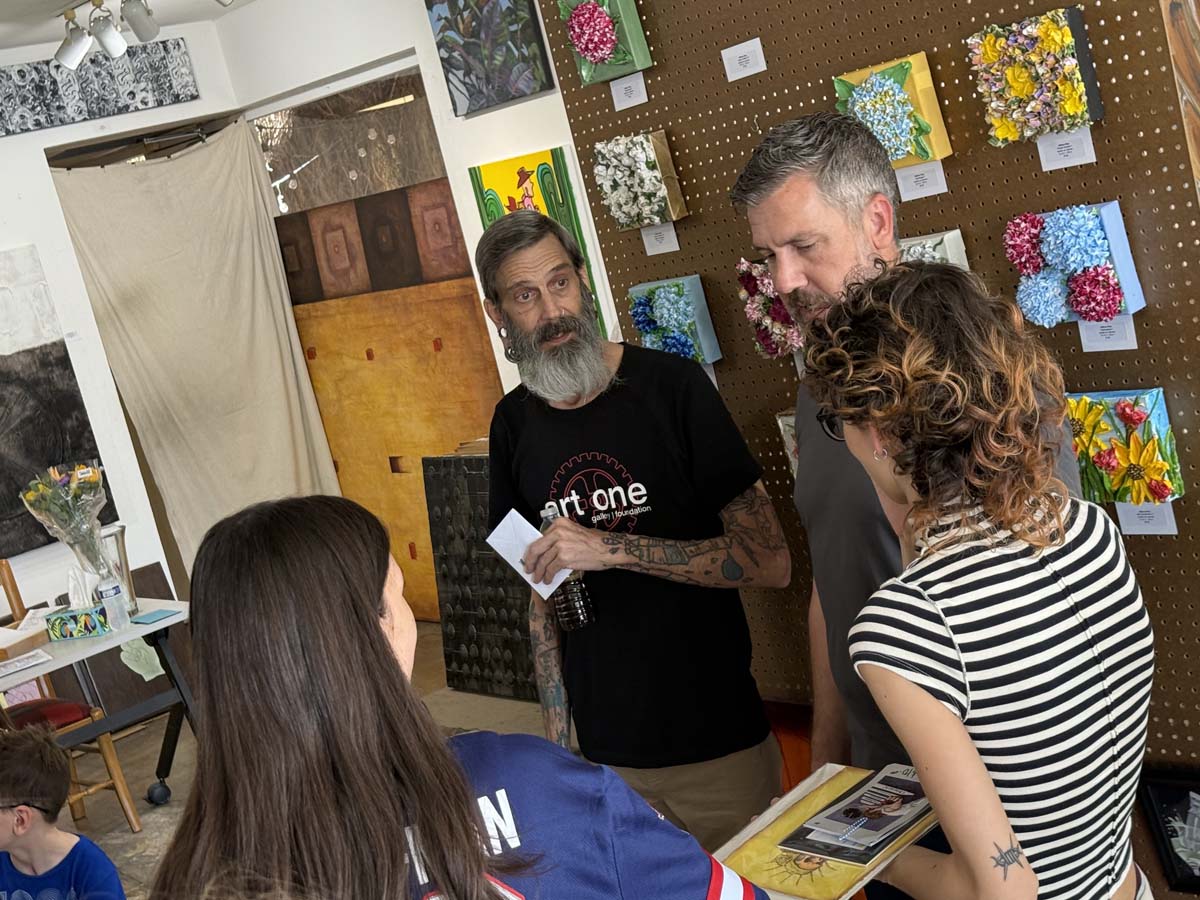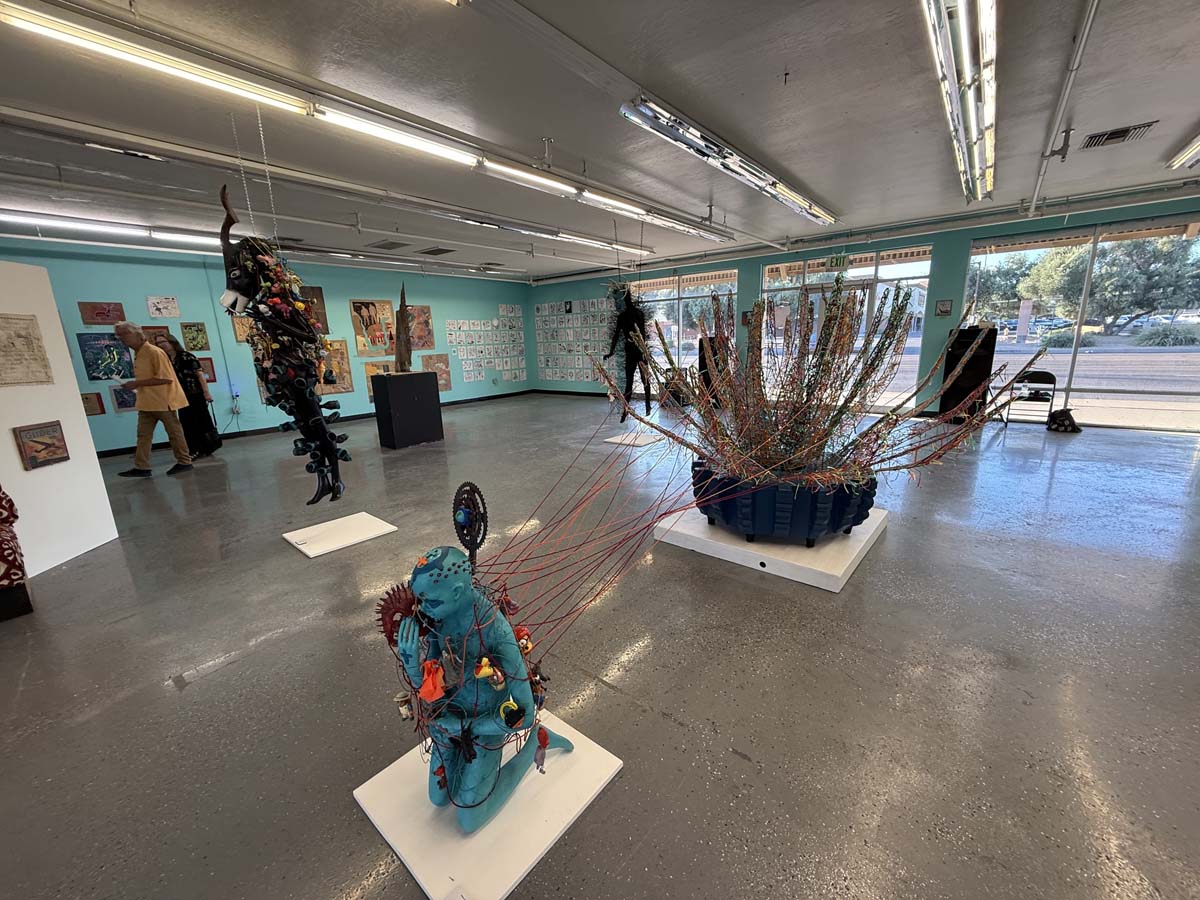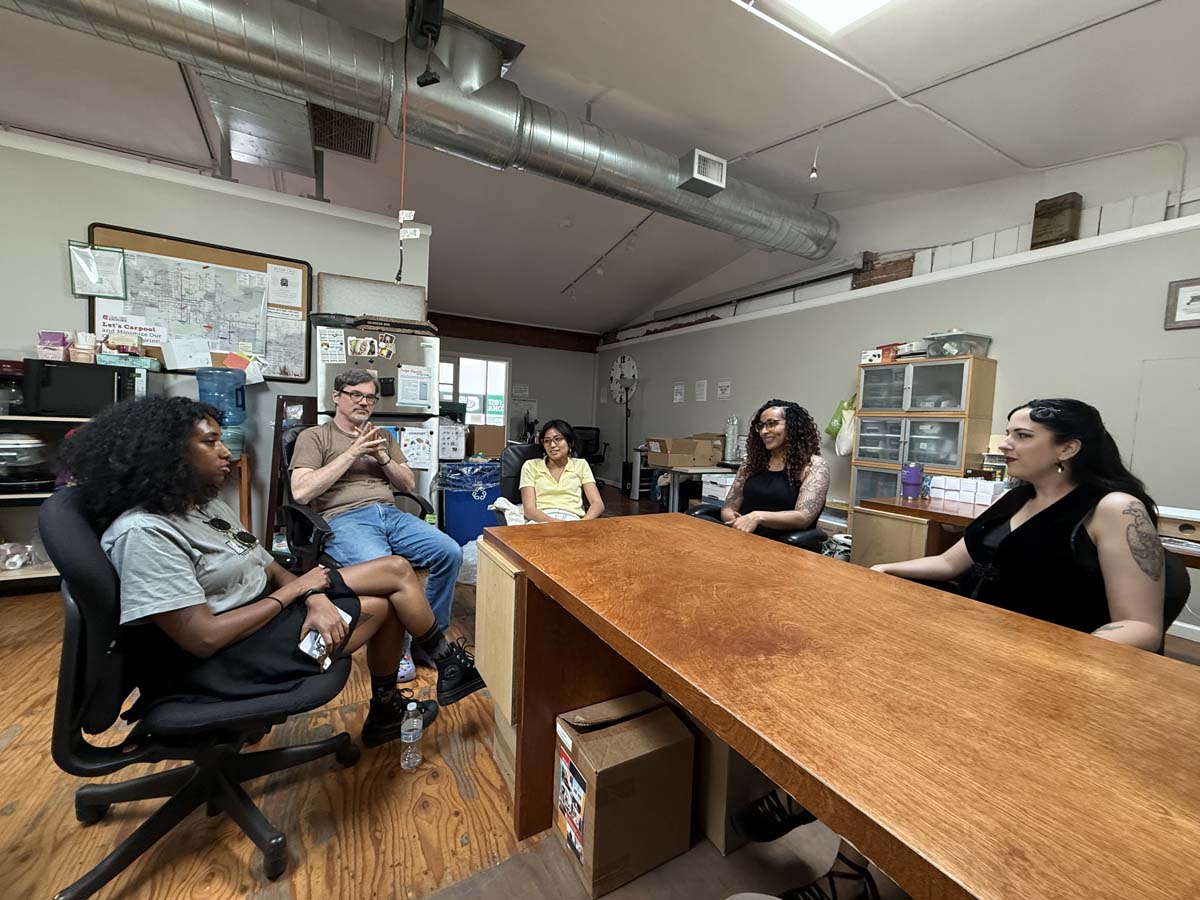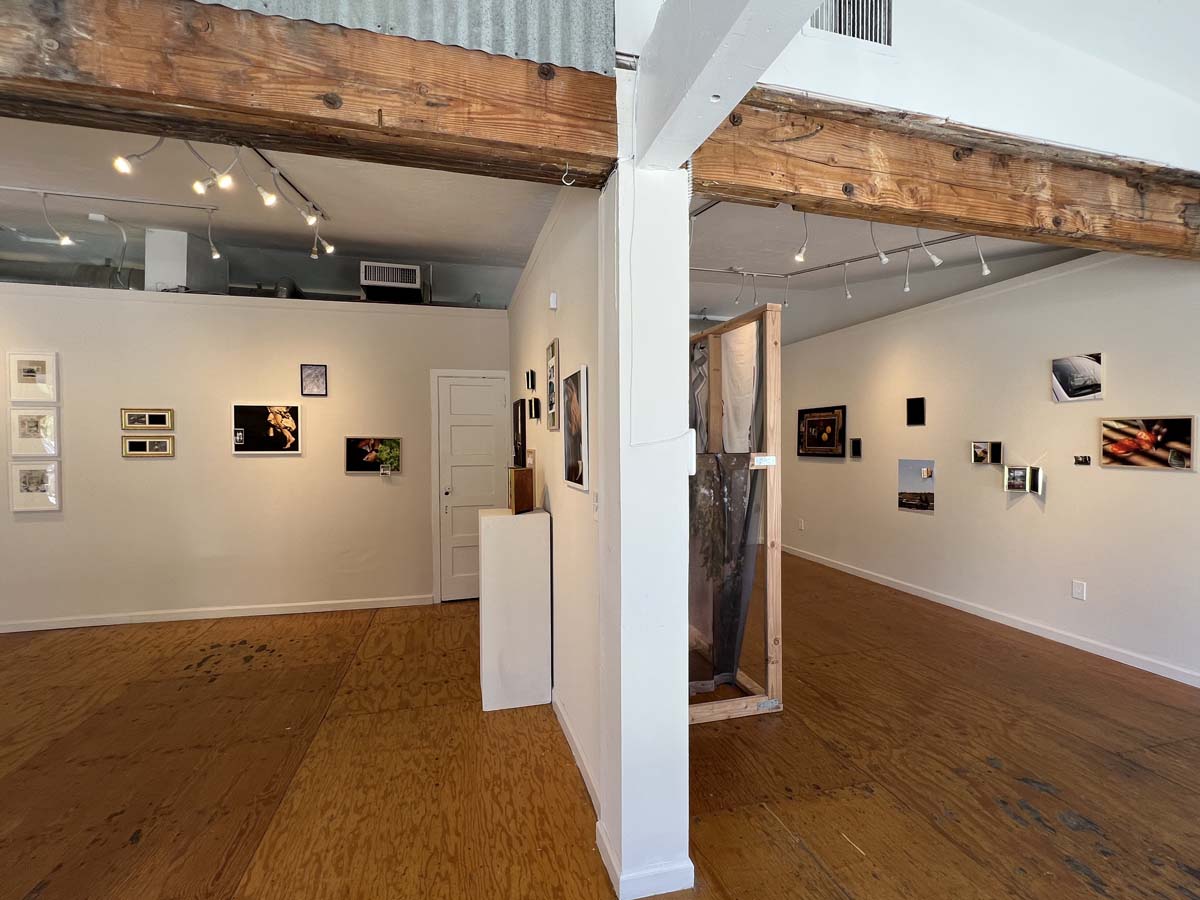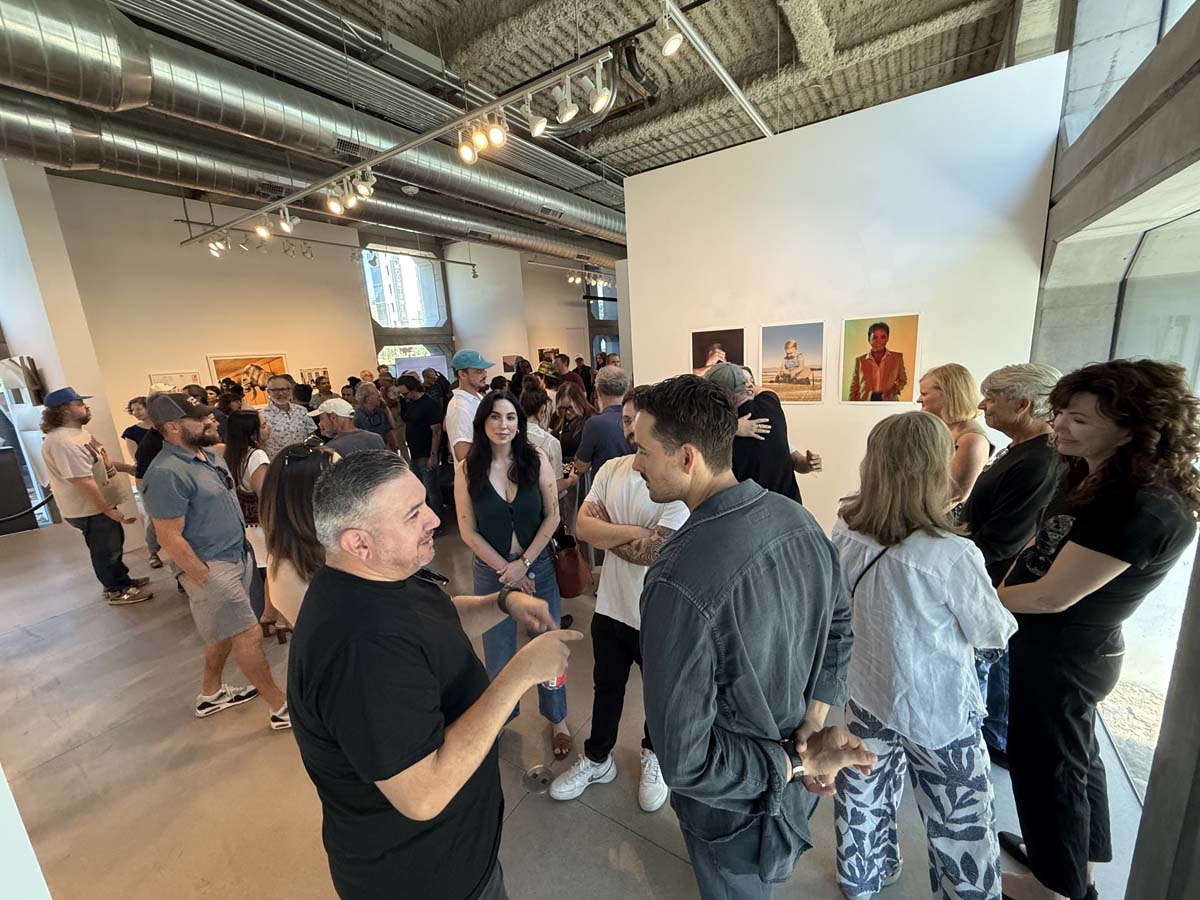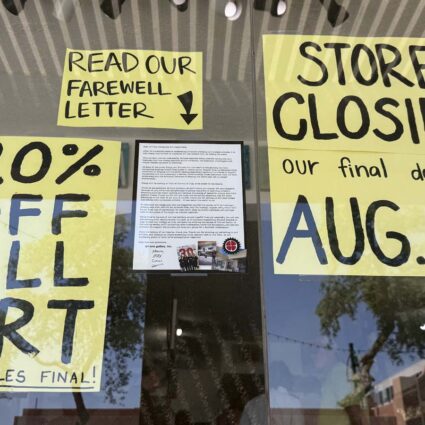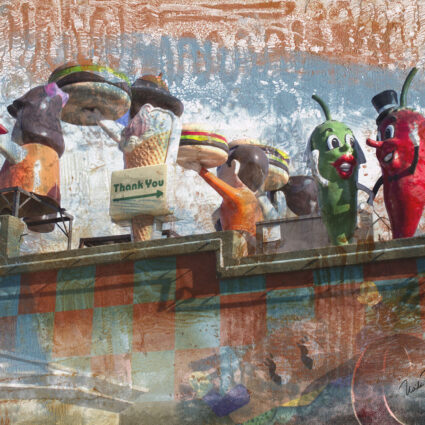Change is afoot in the metro Phoenix gallery scene: Bentley Gallery and Art One are closing, Eye Lounge and Modified Arts are merging, and Rocket Space faces redevelopment plans.
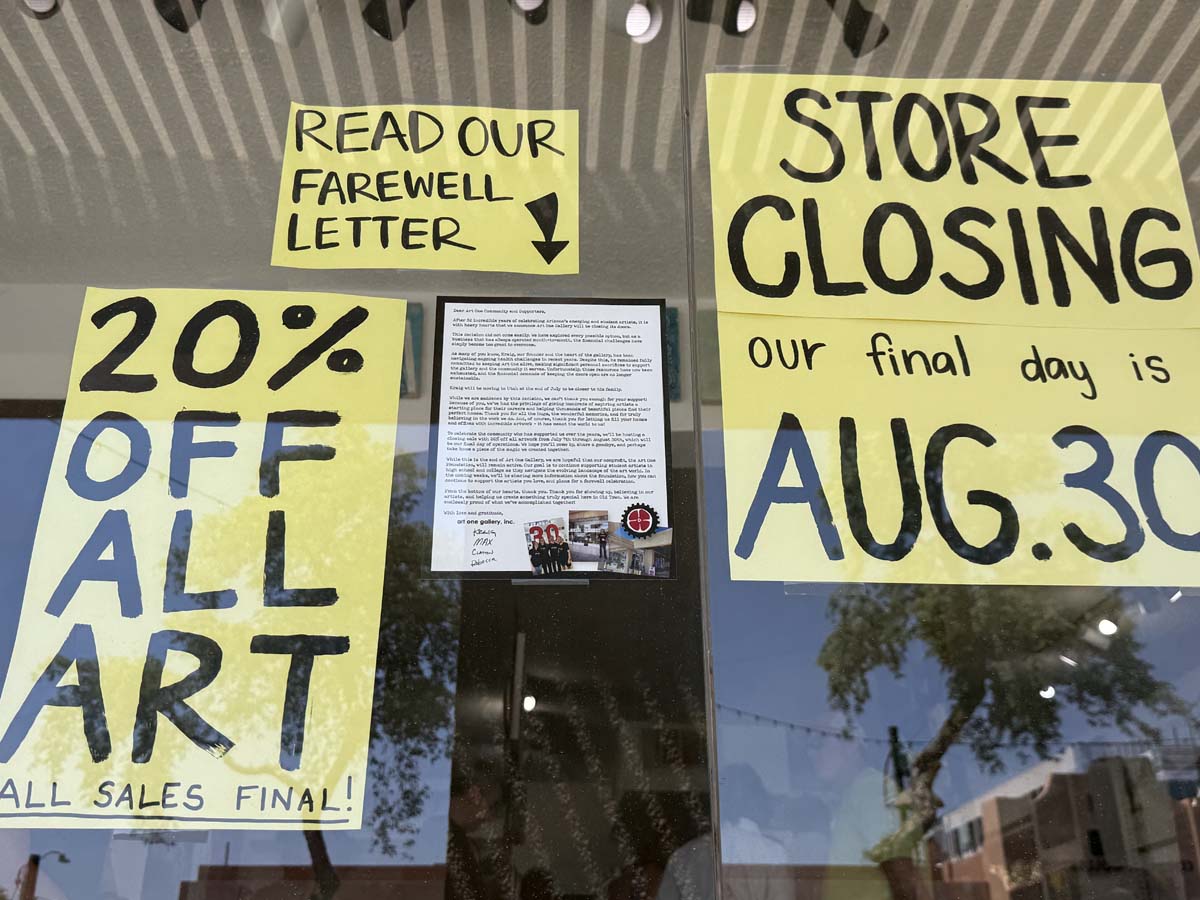
PHOENIX—As a massive wall of dust rolled through metro Phoenix one evening in late August, several galleries in its path were facing changes on a similar scale, wrought by market conditions rather than atmospheric ones.
Days before, a steady stream of artists, collectors, and friends converged on a gallery in Old Town Scottsdale, sharing remembrances and buying assorted artworks before the space ended its decades-long run.
Meanwhile, a longtime legacy gallery near downtown Phoenix was preparing for its final exhibition showcasing the work of a local artist recovering from a recent stroke.
They’re part of the latest gallery scene shuffle in the nation’s fifth-largest city, where the art landscape is shifting amid factors ranging from development to the digital age. Phoenix-area gallerists are experiencing many of the challenges that have led to wider speculation in contemporary art circles about whether galleries are still viable, relevant platforms for sharing, seeing, and selling art.
Four galleries in particular—Bentley Gallery, Art One, Eye Lounge, and Rocket Space—exemplify the complexity of conditions at play not only in metro Phoenix, but on a national and international scale, highlighting the ways larger market-driven forces are interacting with local histories, economic realities, generational shifts, and personal choices to impact the gallery ecosystem.

In early July, Art One Gallery in Scottsdale posted news of its plans to close on social media, citing health issues faced by Kraig Foote, who founded the gallery in 1993 as a way to spotlight emerging and student artists.
But financial factors also played a role, according to the gallery team’s announcement, as they have in other cities from Las Vegas to New York.
“Two years ago, we hoped to expand and become a nonprofit,” says gallery manager Max Smith, who believes another $150,000 could have kept them open for five more years. “Instead we had to make the tough call to close, because it’s really hard to rely on sales when we have such low-cost artworks.”
We need to have these stepping-stone galleries.
The gallery represented about eighty-five artists, took works on consignment, priced most items under $500, and let artists in high school or below keep 100 percent of their sales, according to Smith, who says the gallery also relied on loans and grant funding.
Steve Yazzie (Diné, Laguna Pueblo, European ancestry) had work there when he attended Arizona State University in nearby Tempe. Today, the Denver-based artist is featured in the Life on Mars exhibition at Scottsdale Museum of Contemporary Art.
“In order for that to happen, we need to have these stepping-stone galleries,” reflects Smith.

Kyllan Maney, an artist who first showed work at Art One Gallery as a student, recently became the creative director for the relatively new nonprofit Tempe Arts and Music Coalition.
The coalition operates Rocket Space Gallery at Danelle Plaza, an art space launched in 2024 through the grassroots Danelle Project. Rocket Space is one of the few gallery spaces in Tempe, apart from a city-operated gallery inside Tempe Center for the Arts. But it’s also an arts space in flux, because the plaza is in the midst of a complex redevelopment process.
Today, the coalition leases the space at the market rate from Desert Viking, the developer that owns the building, according to Jacqueline Swan, a Tempe-based arts advocate who serves as both the executive director for TAMC and president of its board, in addition to heading the city’s arts and culture commission.
Swan puts the gallery’s monthly operating costs at about $8,000, and says its revenue streams include grants, donations, fundraising events, and fees some groups pay to use the space. Artists get the full proceeds of works they sell there.
But a change could soon be in the works.
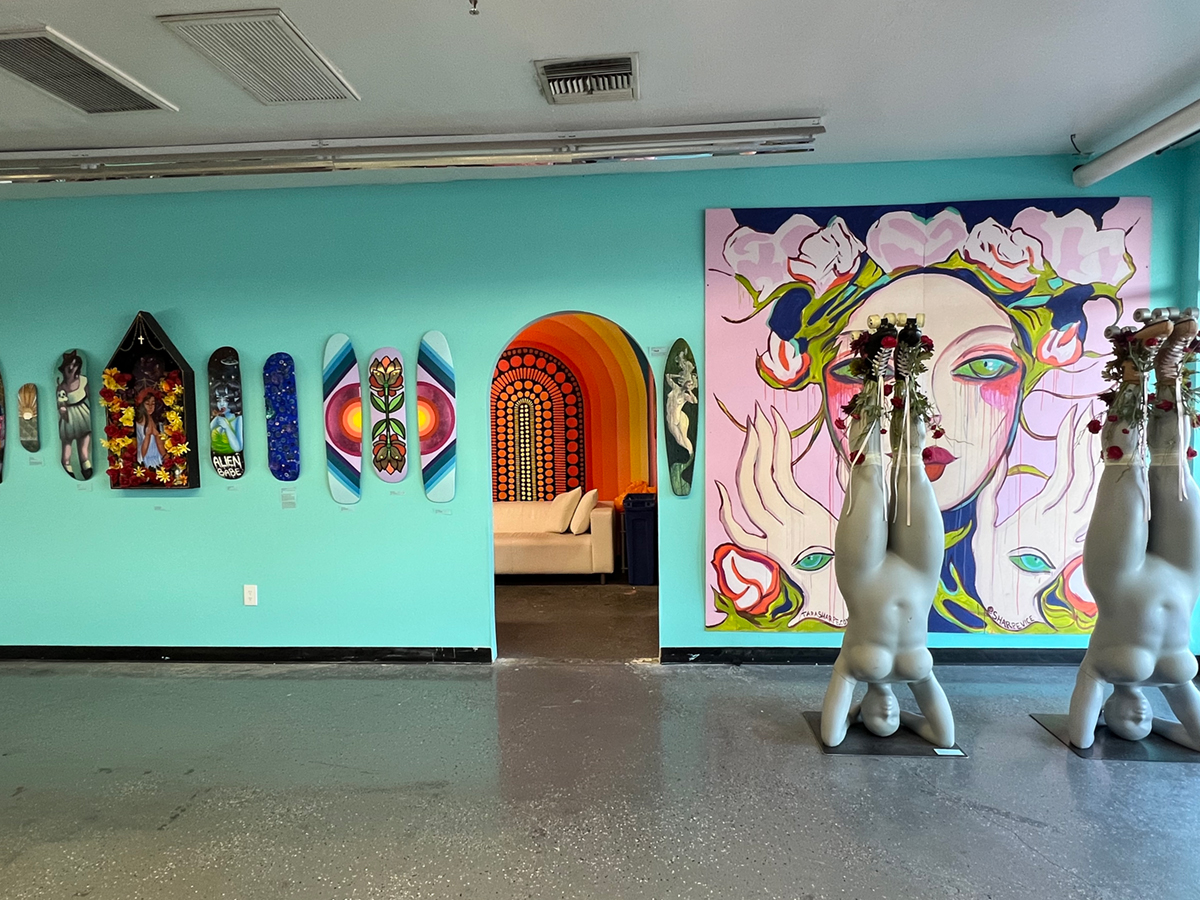
It’s possible that Rocket Space will relocate to another Tempe location after TAMC’s one-year lease expires on April 1, 2026, Swan says, adding that they would “want something cheaper.”
Currently the coalition presents primarily group exhibitions at Rocket Space, such as the She Deck show curated by Maney, which drew over 800 people, as well as an eclectic lineup of events.
“We’re showing work by established artists and emerging artists who’d normally never be able to get a gallery show,” explains Swan. “We really focus on the community, having diverse programming, and making art accessible.”
After U.S. Immigration and Customs Enforcement agents descended on the plaza parking lot one day in June to execute a warrant in the area, for example, TAMC started hosting free monthly workshops on advocacy and creativity in their space.
Over in Phoenix’s Roosevelt Row arts district, the gallery scene shuffle has been happening amid rampant development for many years now.
Even the artist collective Eye Lounge, which counts several of Arizona’s best-known creatives among its alumni roster, is losing its current gallery footprint because artists and building owners Greg Esser and Cindy Dach, who founded Eye Lounge in 2000 and opened Eye Lounge gallery the following year, have other plans for the space.
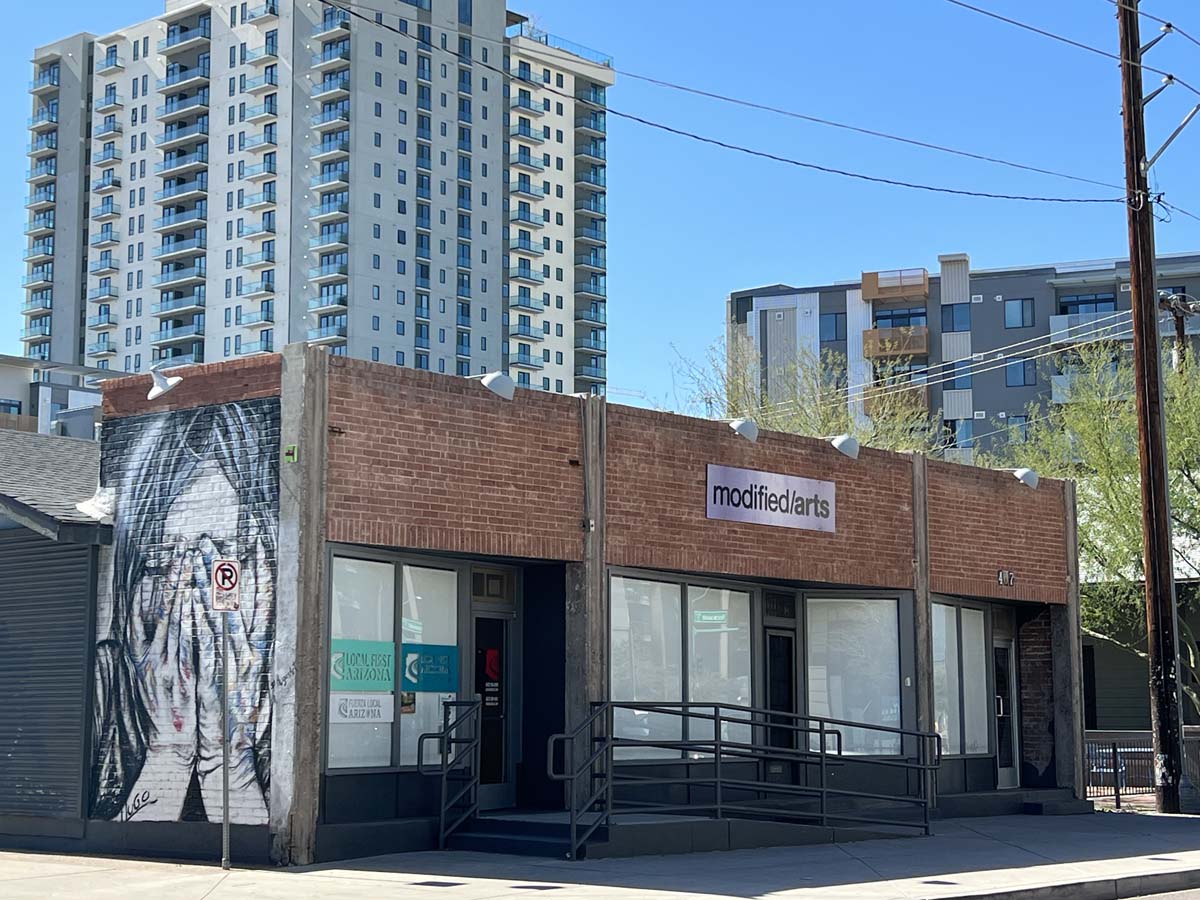
“We keep shifting the space to accommodate different needs,” explains Esser. “We’ve had to adapt since day one,” concurs Dach. Still, the married couples notes that they’ve never charged the collective market rates for gallery space, but opted to underwrite it instead.
Amid the latest change, Eye Lounge artists are seizing new opportunities.
In spring 2024, Eye Lounge began a merger with Modified Arts, a creative space founded by Kimber Lanning in 1999 as a music venue and art gallery. Eye Lounge is already curating the space, and they’ll have a five year lease with an option to renew for another five years once their current gallery closes, according to collective member Kat Davis.
We keep shifting the space to accommodate different needs.” “We’ve had to adapt since day one.
Several members of the collective sat down with me at Modified Arts one Sunday afternoon in late August, eager to talk about the way forward in both aspirational and practical terms.
The collective decided to increase the number of member artists, and raised the monthly dues to $70 to $85, to help meet expenses. But making sales isn’t their primary focus, as evidenced by the fact that all five addressed the importance of galleries as places of experimentation and creative expression.
“So much has shifted in the art landscape of the Valley,” reflects Eye Lounge member Regan Henley. “As a collective, we feel like we’re stewards of the Phoenix arts scene.”
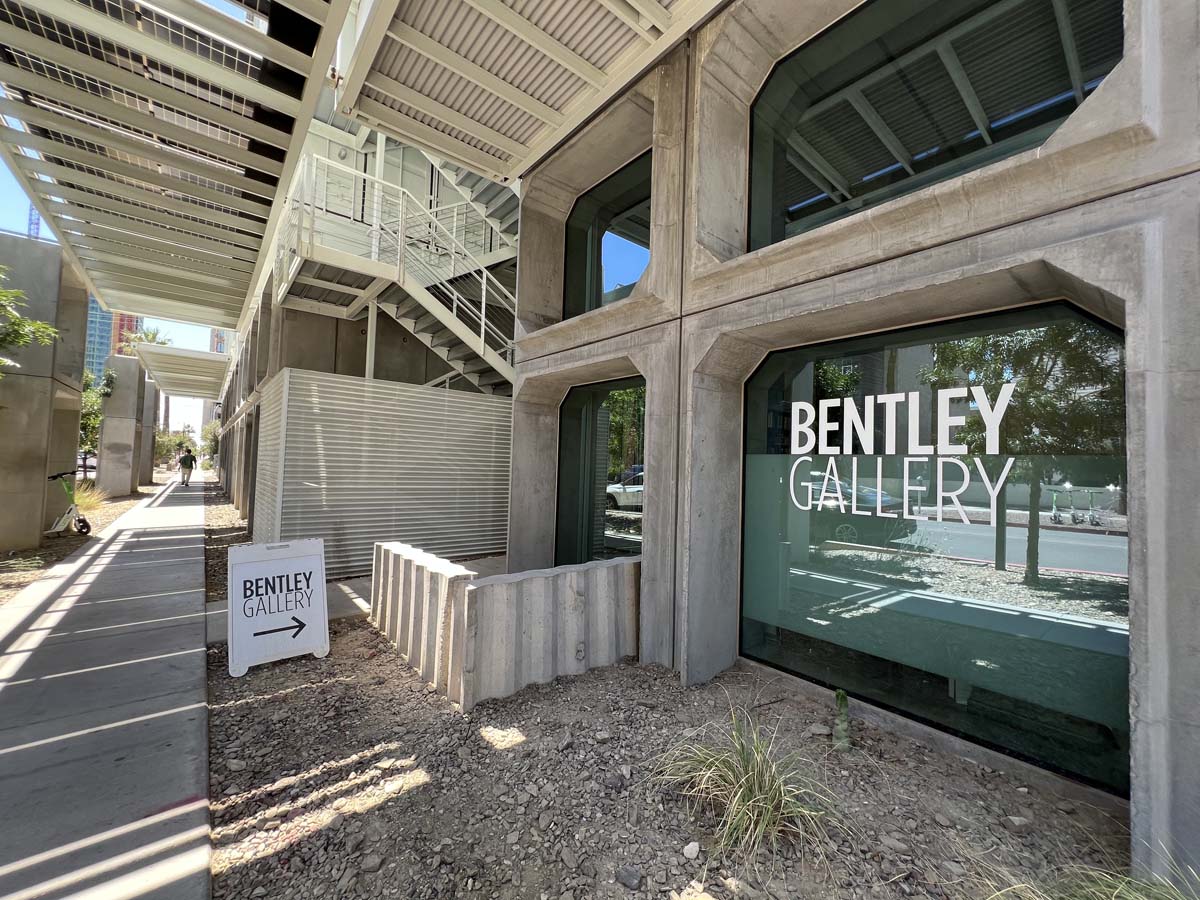
Meanwhile, another gallery in Roosevelt Row is closing its doors in mid-September, as founder Bentley Calverley retires after forty-one years of exhibiting art in metro Phoenix, including Old Town Scottsdale
In Scottsdale, Calverley took issue with the city for supporting short-term tented art events when there were brick-and-mortar galleries employing people and paying taxes year-round.
Calverley didn’t disclose the leasing terms for her most recent location comprising nearly 4,000 square feet on the ground floor of a trendy shipping container development in Phoenix, but that same space is now listed on LoopNet with a lease amount of $33 a square foot per year.
Beyond rent, Calverley says there are several additional expenses major galleries face these days, including participating in art fairs and paying to sell work through online platforms such as Artsy.
Even so, as Calverley looks forward to having more time for travel and other pursuits, she’s thinking about all the artists she’s encountered through the years. “So many artists have taught me to look at the world differently,” she says. “They’ve made my life so much richer.”
It could be years before another major dust storm envelopes the sunny skies of metropolitan Phoenix, but these four galleries clearly reveal that the winds of change are still blowing through the local arts scene, reshaping the landscape as galleries continue to face new challenges and opportunities.
